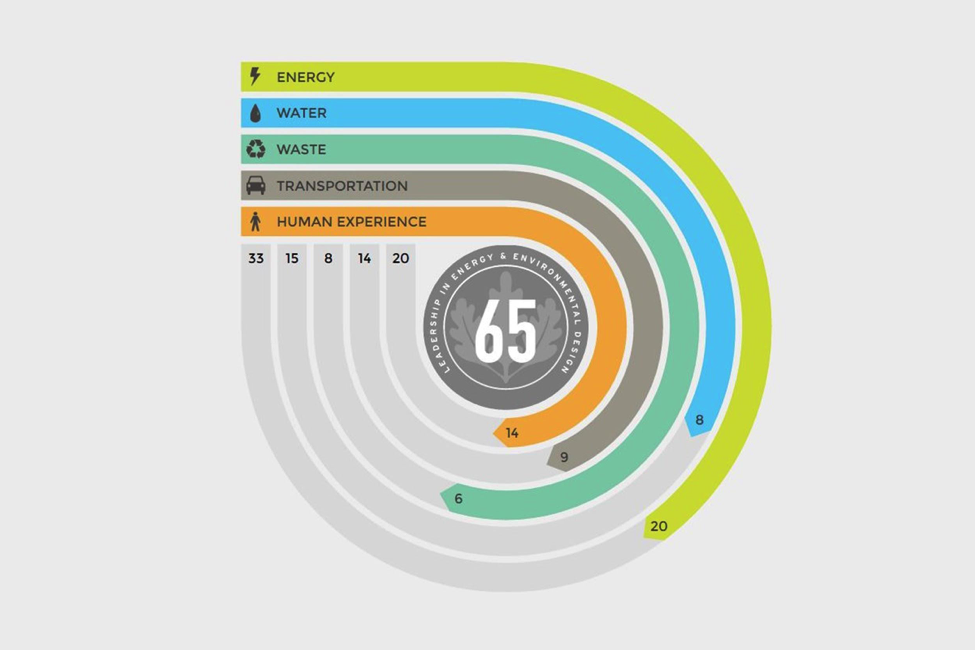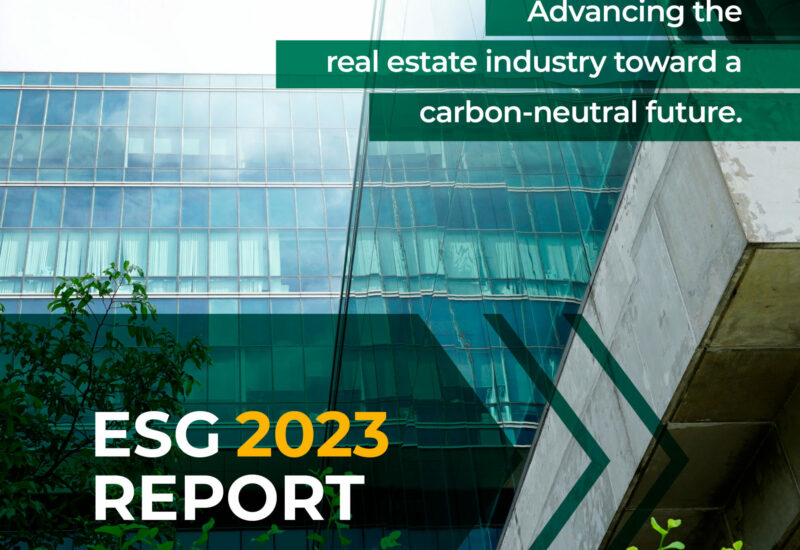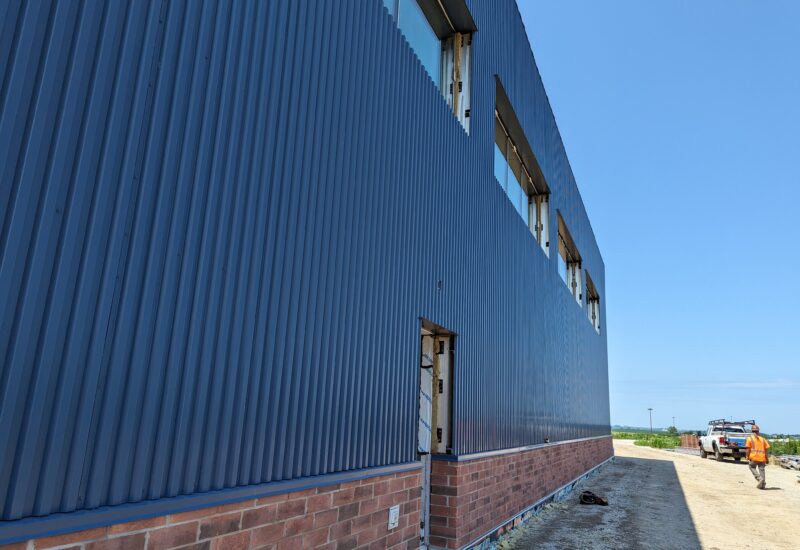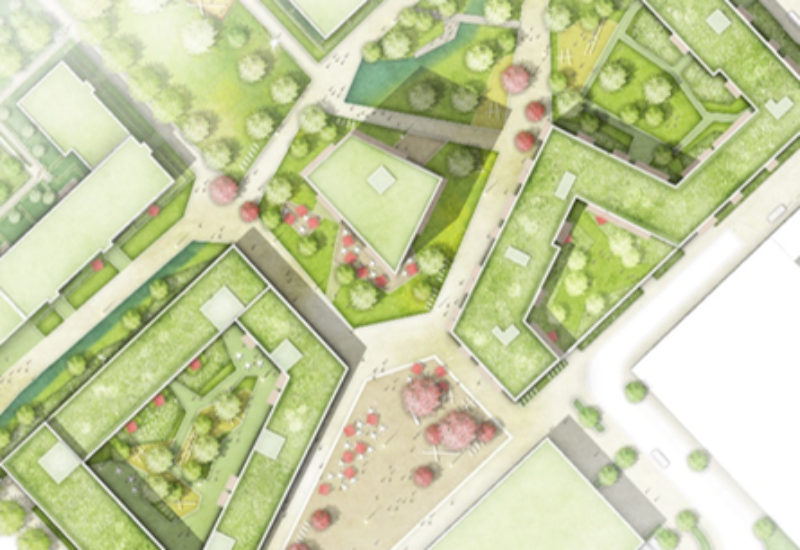LEED v4.1 was introduced back in January 2019, but it is still not as widely used as LEED v4. This is primarily due to the general concern that the new version comes with higher requirements. While this is true for some credits, LEED v4.1 also contains several changes that may actually make it easier to obtain a LEED certification and reduce the cost and time required. However, it’s not a one-size-fits-all approach and it is necessary to differentiate between the various rating systems to decide if v4 or v4.1 works best for you. This article will focus on the key differences between v4 and v4.1 for the rating systems LEED Existing Buildings: Operation & Maintenance (LEED EBOM) and LEED BD+C or ID+C. We will also share our experience and lessons learned from our v4.1 projects.
Comparison of v4.1 for Rating Systems EBOM and BD+C / ID+C
LEED EBOM v4.1 uses the ARC platform in an effort towards a data and performance-driven certification system. If you are already benchmarking your project in the ENERGY STAR Portfolio Manager, you can easily link the ARC account for water and energy consumption, and the data is transferred automatically. LEED EBOM v4.1 calculates a score out of 100 and 10 prerequisites have to be fulfilled. Ten base points can be achieved if a select list of credits is achieved. If the property was certified before using the LEED BD+C or ID+C system, all 10 base points are automatically accounted for the LEED EBOM v4.1 certification. The remaining 90 points are based on five data and performance criteria listed below:
- Energy: Energy Consumption of the past 12 months – data is entered manually on the ARC platform or automatically populated when connected to the Portfolio Manager
- Water: Water Consumption of the past 12 months – data is entered manually on the ARC platform or automatically populated when connected to the Portfolio Manager
- Waste: Waste generated and diverted based on at least one waste stream audit
- Transportation: GHG emissions due to occupants commuting based on an occupant survey
- Human Experience: Monitor indoor air quality readings (CO2 / TVOC) and administer at least one occupant survey
After achieving the LEED certification, you must continue to submit and document performance data to update the LEED certification annually for a minimum of three years. After three years, recertification is required if the property does not want to lose its certification status. For LEED BD+C and ID+C v4.1, the changes are not as obvious. The overall categories and the documentation process are still the same. However, more current standards, such as ASHRAE 90.1-2016, are referenced.
Throughout its history, the USGBC has been very successful in adapting and implementing feedback from the market into the next LEED versions – e.g., new systems addressing unique characteristics of usage types such as retail, hospitals, data centers, or including Life Cycle Analysis. With v4, USGBC recognized that some credits were rarely pursued and reduced the thresholds for some of those in v4.1. The table below groups the credits into three categories based on how often they have been used for LEED BD+C v4.
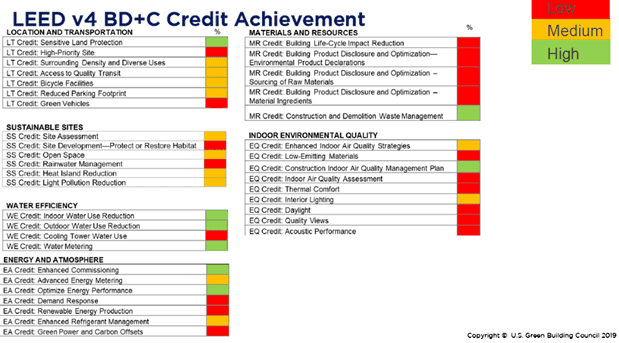
Among the reduced thresholds in the Location and Transportation (LT) category is the slightly lower number of rides needed for points in public transportation and extending the distance to bicycle storage. In the Sustainable Sites (SS) category, thresholds for the percentage of vegetated space and rainwater infiltration were lowered. The Water Efficiency (WE) category was mainly changed by integrating the former alternative compliance path “no cooling tower” as a standard pathway for v4.1.
Besides the previously mentioned change to ASHRAE 90.1-2016, the renewable energy credit was introduced combining the former Renewable Energy Production + Green Power and Carbon Offsets Credits. Finally, major changes were introduced regarding building product documentation making it far easier to achieve points for Environmental Product Declarations and low-emitting materials.
Client Reactions and Our Experience
A complaint about LEED has always been that greenhouse gas emissions (GHG) related to the operation of buildings are not considered and the focus is only on energy cost. We have heard from many clients that they appreciate the change in the energy metrics to include both annual energy cost and GHG. This changes the HVAC selection process and gives a higher focus on eliminating onsite fossil fuel usage and replacing it with an HVAC system based solely on electricity.
With LEED now referencing ASHRAE 90.1-2016 it is matching or is even ahead of some state and local requirements. This is appreciated by those who do not think LEED is pushing hard enough. However, the majority of clients are aware that the baseline of ASHRAE 90.1-2016 compared to 90.1-2010 is better (on average it is 16% higher depending on building type, location, and other factors) with the biggest change in the baseline due to significantly reduced lighting power densities.
By far, the most appreciated fact with two versions available at the same time is the ability to “cherry-pick” credits. To increase familiarity with LEED v4.1, USGBC allows selecting LEED v4.1 credits for a v4 certification without the need to switch the whole project from v4 to v4.1. As some thresholds have become less stringent, credits that would not have been achieved in v4 can be achieved in v4.1. Based on our experience pursuing select v4.1 credits for a v4 certification can easily make a difference of four to eight points, depending on usage type and location. This makes “cherry-picking” of particular interest for projects that have difficulties achieving the targeted certification level.
For LEED EBOM, the main reasons for our clients to use v.4.1 over v4 are the lower impact on cost and time. Most v4.1 projects can be certified within 3-6 months, while v4 projects normally take 6-12 months. In addition, due to the significantly lower number of credits required, 22 credits for v4.1 compared to 52 for v4, and some of the more costly credits such as commissioning eliminated, the cost impact is also much less for most projects.
Conclusion and Outlook
Some clients want to push the boundaries and go straight for the LEED v4.1 certification. Most clients, however, are conscious of the impact of the certification on their project regarding cost and schedule and stay with LEED v4 for their LEED BD+C or ID+C projects, while selectively pursuing individual v4.1 credits. For LEED EBOM, almost all of our clients prefer the more streamlined approach of v4.1. This trend is reflected in the overall numbers. As of February 2021, 1,263 projects are registered with v4.1 (excluding BD+C: Residential Single Family), and of those, 892 are registered with EBOM and only 237 with BD+C or ID+C. For certifications, the imbalance is even more apparent. Out of 339 certified projects (excluding BD+C: Residential Single Family), 337 used the rating system EBOM.
As of now, there is no date set at which v4.1 is mandatory and v4 can no longer be used. Neither was it officially communicated yet what the plan for the system beyond v4.1 is. But if v4.1 doesn’t go far enough for you, you can always pursue LEED Zero.
